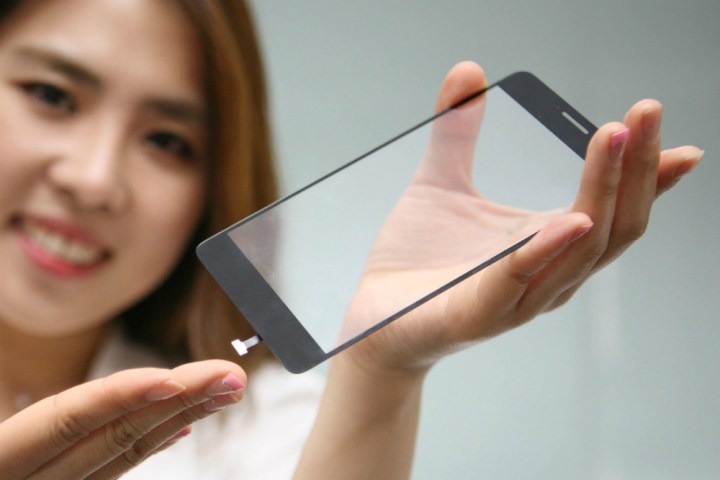
Fingerprint sensors on most phones are immediately obvious, due to being fitted inside buttons on the front like the iPhone or Galaxy S7, or into a recessed square or circular cutouts on the back of a phone, like most Huawei devices, or the LG G5. LG Innotek flipped the glass front panel around, etched out a section just 0.3mm thick, and placed a fingerprint sensor inside.
Turn the glass over, and there’s nothing there to indicate a fingerprint sensor is hidden away, giving a sleeker, less cluttered design, and opportunities to mark out where to place a finger or thumb using subtle graphics or markings. The sensor is protected from water damage, and the surface is less likely to be scratched, without the use of sapphire crystal covers like that used on the iPhone’s Touch ID button. LG also dropped a 130 gram steel ball from a height of 20cm to prove the thin glass’s toughness.

LG claims the invisible sensor has a false acceptance rating (FAR) of 0.002 percent. This is the likelihood of it accepting someone else’s fingerprint as your own. While great for our own security, this is an essential if LG wants to use the new fingerprint sensor on Android phones. A FAR rating no greater than 0.002 percent is a prerequisite for sensors used with Android 6.0 Marshmallow, according to Google’s documentation.
While the new under glass fingerprint sensor has been announced, and LG Innotek has developed a special adhesive to stick the sensor to the underside of the panel, there’s no indication when it may go into mass production, ready for use on an actual phone. LG’s recently revealed the G5, but we’re expecting it to show off a sequel to the V10 later in the year. Perhaps the phablet will mark the debut of this exciting new innovation? We’ll keep you updated.
Editors' Recommendations
- Does the iPhone 14 have a fingerprint sensor? Here’s what happened to Touch ID
- I hope the iPhone 13 has a fingerprint sensor as good as the Galaxy S21’s
- In-display fingerprint sensors are coming to cheap phones with LCD screens
- The Galaxy S10’s fingerprint sensor can be fooled by a screen protector
- Oppo’s exciting new tech hides the selfie camera under the phone screen




